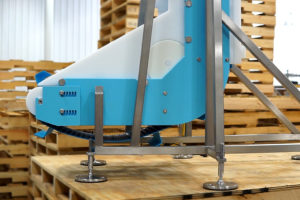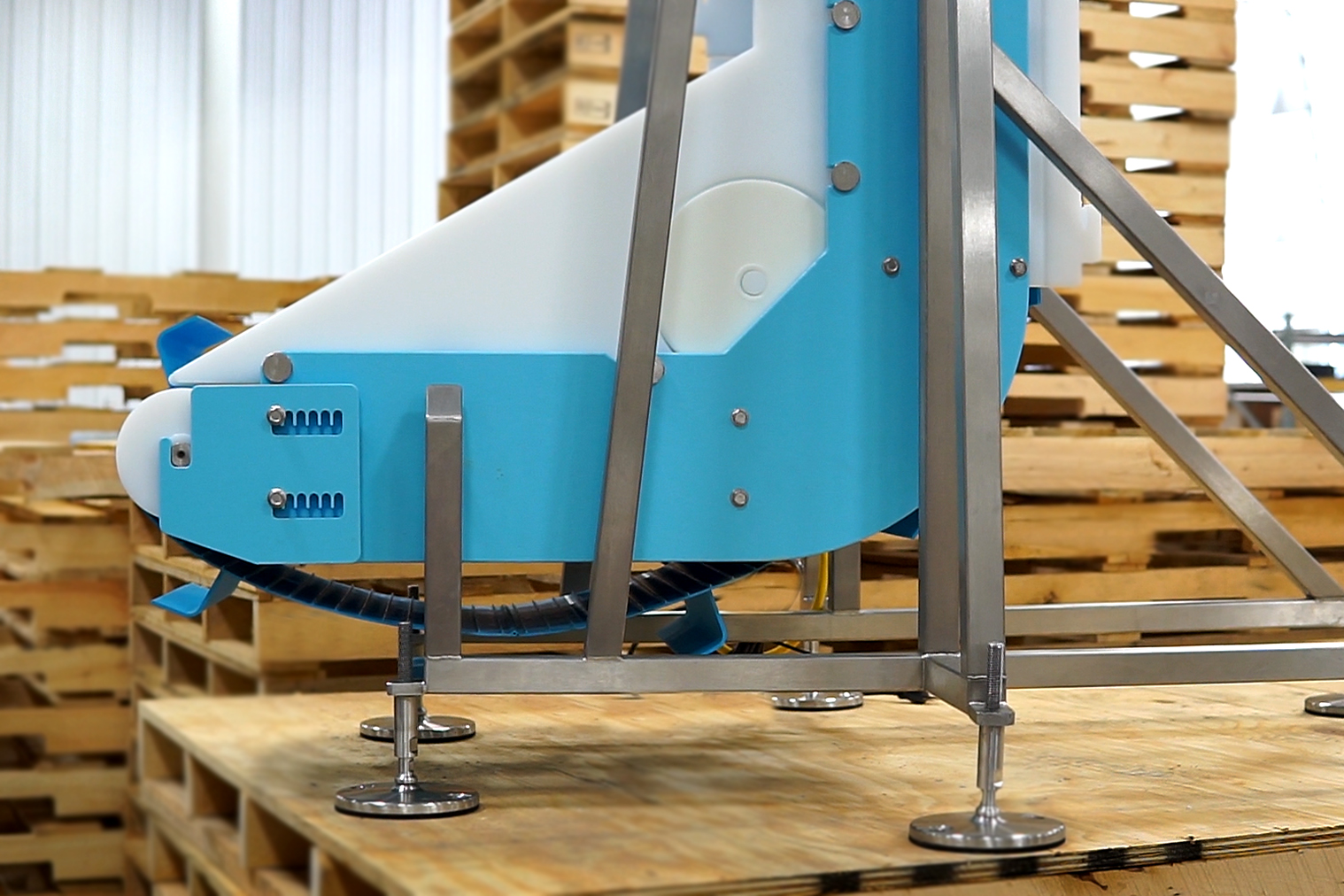 Conveyor belt sag, also known as catenary sag, refers to the tensionless section of the belt that hangs down on the return side (or underside) of the conveyor. It is an intended section of the belt that is required to keep your conveyor running smoothly.
Conveyor belt sag, also known as catenary sag, refers to the tensionless section of the belt that hangs down on the return side (or underside) of the conveyor. It is an intended section of the belt that is required to keep your conveyor running smoothly.
The catenary sag is a natural way to tension the belt. It allows gravity to give the belt the exact amount of tension instead of relying on a mechanical take-up or tension system. Mechanical take-up or tension systems are required when catenary conveyor belt sag is not included in the design of the conveyor system.
Plastic sanitary conveyor belts stretch over time due to heavy loads, product temperature and/or room temperature. The fluctuation of the belt length on a conveyor designed to utilize the catenary conveyor belt sag will not be an issue. On a conveyor that requires a mechanical tensioning system, you will need to continuously monitor and make necessary adjustments to tweak the belt length as it grows and shrinks.
Several parts and components are included in the design of mechanical tensioning systems, making them complex. With every part and component used in the design, you increase the likelihood for needed repair and harboring bacteria, which will increase your maintenance and sanitation costs.
Conveyor belt tracking issues happen exclusively to belts that utilize a mechanical tensioning system. Belt tracking problems require the conveyor system to be shut down, which will reduce or stop your production. Significant damage to the belt and/or the conveyor frame will be the result if this condition is not corrected promptly, only adding to production downtime.
Benefits of Catenary Conveyor Belt Sag
- No complex mechanical take-up system required
- No need to monitor natural belt stretch
- Keeps the belt from skipping
- No belt tensioning tools required
- Eliminates belt tracking issues
- Reduced maintenance and sanitation costs
- Easier cleaning access to the internal components of the conveyor
If you let it, the nature of gravity will allow your conveyor to run smoother and be more economical than one that includes a mechanical tensioning system.
[btn url=”https://dynamicconveyor.com/wp-content/uploads/2016/10/Preventative-Maintenance-Checklist.pdf”] Keep Your Conveyor Running Using This Checklist [/btn]- Modern Conveyance and Automation in Food Manufacturing - March 21, 2025
- Dynamic Conveyor and Muskegon Middle School: A Collaborative Journey in Design Thinking - February 17, 2025
- Upgrading 30 Years of Reliable Conveyor Performance for a Souvenir Manufacturer - February 3, 2025


